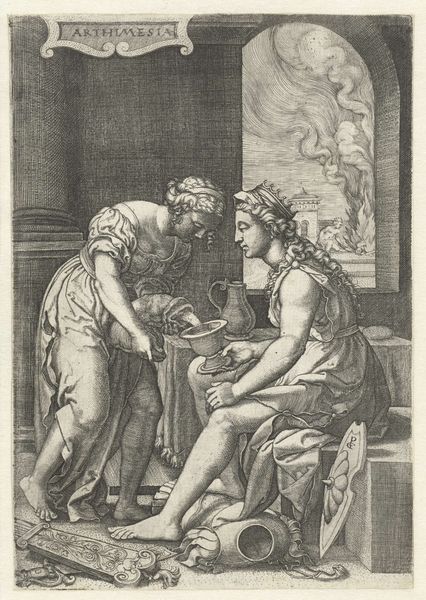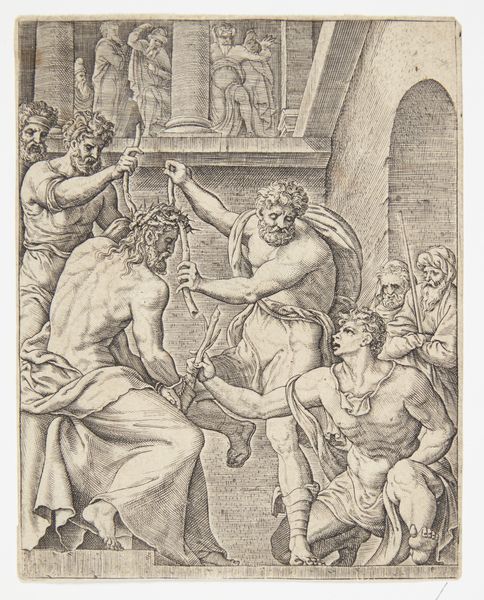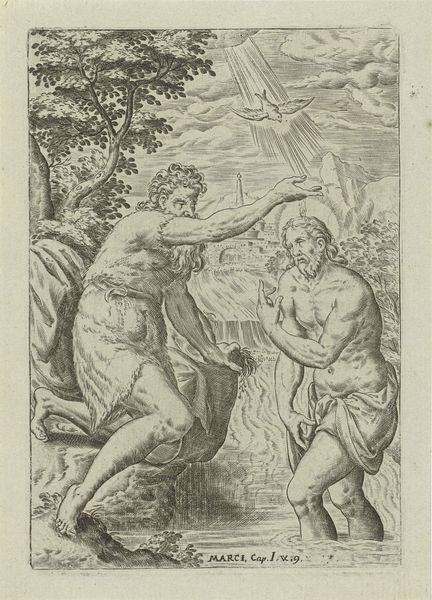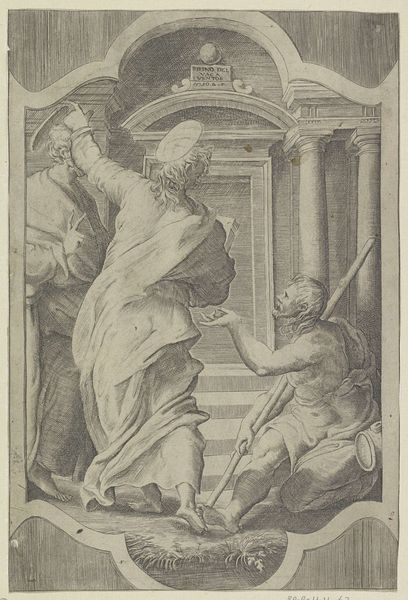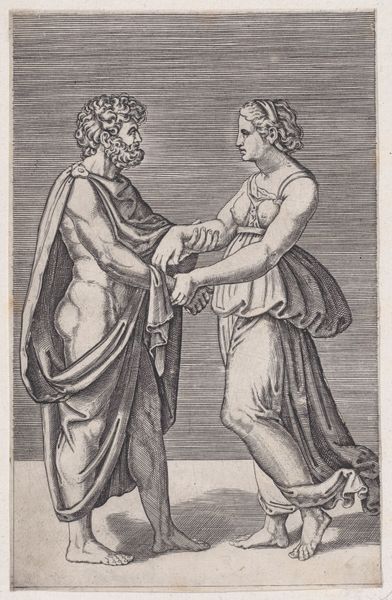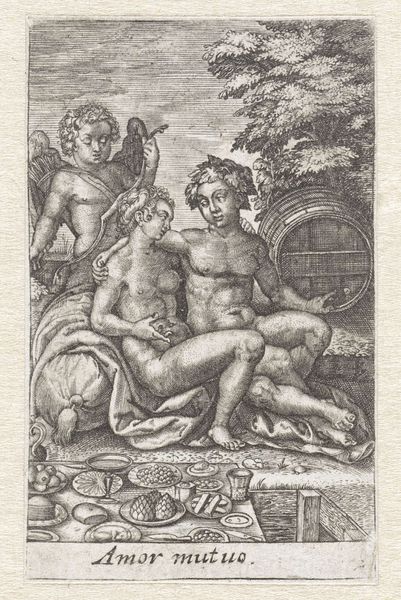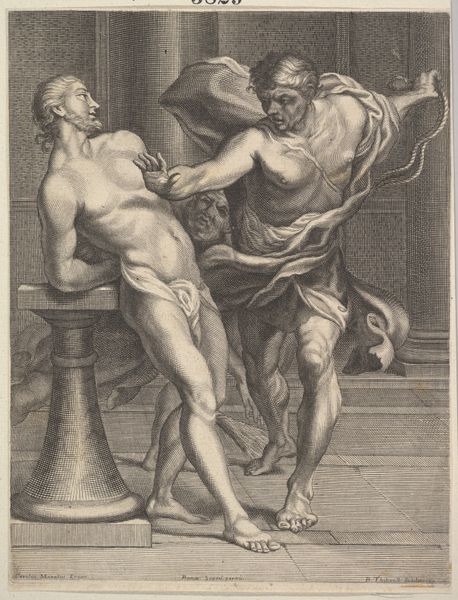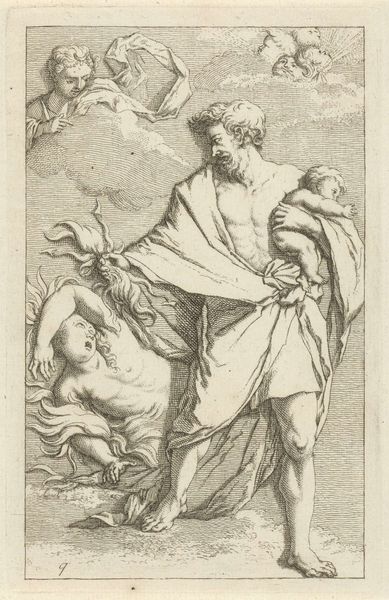
Dimensions: height 74 mm, width 52 mm
Copyright: Rijks Museum: Open Domain
Curator: Welcome to the Rijksmuseum. We're looking at Georg Pencz's "Dialectica," an engraving dating from 1539 to 1543. What's your initial response to this allegorical piece? Editor: Stark, surprisingly intimate given the allegorical nature. The fine hatching of the engraving gives it an almost ethereal quality. But what exactly is being weighed here? Curator: Indeed. The composition revolves around the scales held by the putto. Dialectica, seated and crowned with laurel, represents the art of logical discussion. Her gesture suggests a careful consideration of arguments and evidence. The very act of comparing dissimilar subjects using measurement suggests this. Editor: That putto looks awfully bored with his labor. All of that weight, all that implication! And the woman herself seems caught in a suspended moment. I find myself wondering about the societal context of this work—who commissioned it, and what purpose did it serve in that early print market? The materiality of the print—its size, its reproducibility—speaks volumes about the democratisation of knowledge. Curator: Certainly. The material and its dissemination underscore Renaissance humanism, which valued critical thought. The very fine detail of the engraving requires mastery over tools, while simultaneously representing reason and logical consideration through composition. The artist creates balance within a limited frame. Note how the vertical column she leans against counters the implied movement of the putto and scale. Editor: Speaking of the engraver's skill, I can’t help but ponder how that labor informed its meaning. Creating these images was certainly a skill! Think about the cost of materials, the time involved... This wasn't merely art for art's sake, was it? And does the angel also reflect contemporary notions of labor for virtue? Curator: A compelling consideration! The artwork exists as a visual object for discussion, and is itself, dialectical. Editor: Exactly. That's what makes Pencz’s "Dialectica" endlessly intriguing—how it captures and interrogates its era through the lens of materials and processes. It serves as a reminder that understanding a piece means grasping the web of factors involved in its production.
Comments
No comments
Be the first to comment and join the conversation on the ultimate creative platform.

